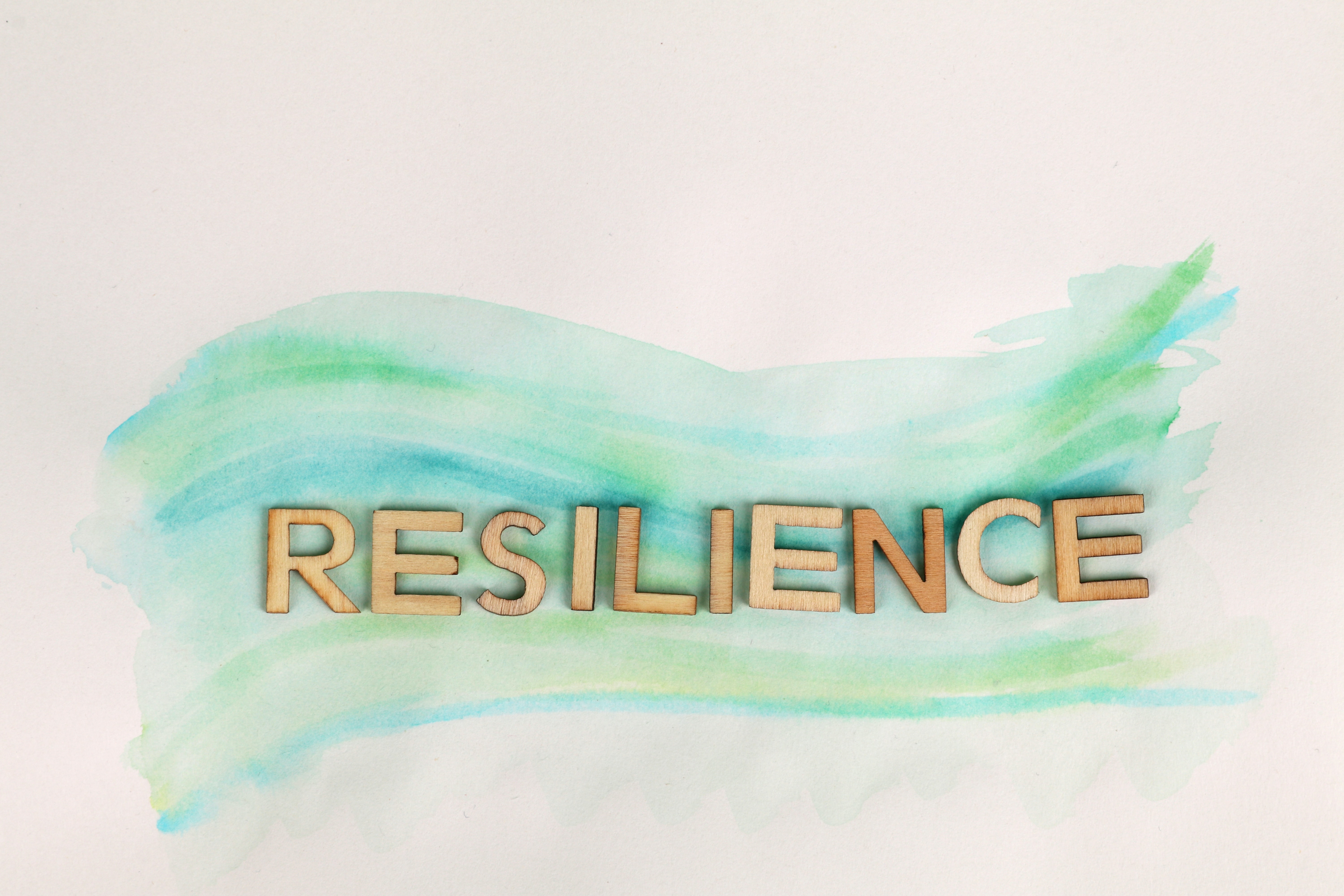It is essential to know the importance of developing resilience. Resilience is a contentious issue in positive psychology and mainstream discussions of positive psychological notions. According to some, resilience is a miraculous personality quality capable of healing all wounds and righting all wrongs.
Although resilience isn’t the be-all and end-all of personality qualities, it’s a popular topic for a reason: it’s a fantastic trait to have, it’s linked to a slew of beneficial outcomes, and, perhaps most significantly, it can be improved.
Continue reading to understand more about resilience and why it is getting so much attention.
What is Resilience
Resilience is described as our ability to adapt and recover in the face of adversity. It is the ability to persevere despite adversity.
Our resiliency levels will fluctuate and grow with time, and we will recognize that we do not always cope as well as others and surprise ourselves when faced with a difficult situation.
In another way, resilience is just one of many psychological talents we employ to reestablish our sense of normalcy.

Why is it important to build Resilience
Resilience is essential in life since we cannot avoid adversity. There will always be problems, but we can effectively conquer them if we are resilient. Resilience allows us to overcome adversity while maintaining confidence in our ability to succeed.
Resilience is an important life skill because it teaches you how to get back on your feet after overcoming a challenging situation. When resilient, we have more faith in ourselves and our abilities. These are valuable general qualities since they boost our confidence and determination to succeed.
A resilient mindset benefits all aspects of life, including jobs, relationships, the home, and personal life. As different areas may bring obstacles at other times, increasing your total resilience can help you deal with whatever problems come.
Types of Resilience
Resilience is described as the ability to deal with adversity and is a measure of complete adaptability. There are, however, various types of resilience, each of which may impair a person’s ability to cope with specific sorts of stress.
Social Resilience
Social resilience, also known as community resilience, refers to a group’s ability to rebound from adversity. It consists of people who discuss and collaborate to address problems that affect people personally and collectively.
Coming together in the aftermath of disasters, socially supporting one another, becoming aware of community issues, and establishing a sense of community are all examples of social resilience. Such responses are critical in times of crisis, such as when natural disasters affect entire communities or vast groups of people.
Physical Resilience
The ability of the body to adapt to change and recover from physical obstacles, illnesses, and injuries is referred to as physical resilience. According to a study, this resilience is good for one’s health. It has an impact on how people age, as well as how they react to and recover from physical stress and medical diseases.
Emotional Resilience
Emotional resilience is the ability to control one’s emotions in challenging situations. Resilient people are aware of their emotional reactions and are in touch with their inner life. When presented with adversity, they can use this to relax their thoughts and manage their emotions.
This form of resilience also assists people in maintaining their optimism in the face of adversity. They recognize that difficulties and negative feelings will not continue forever since they are emotionally resilient.
Mental Resilience
The ability to adapt to change and uncertainty is referred to as mental resilience. In times of crisis, people with this type of resilience are adaptable and calm. They use mental strength to overcome obstacles, move forward, and remain hopeful in the face of hardship.
10 Ways To Build Resilience

Resilience is defined as the ability to deal with and recover from life’s challenges. It can mean dealing with stress effectively and losing your cool. Resilient people are more optimistic and handle well with stress.
While it appears that some people are born with resilience, research reveals that these traits can be learned. Whether you’re coping with a challenging situation or want to be prepared for the next one, here are ten personal resilience tactics to help you.
Be Positive
Maintaining a positive attitude in stressful situations may be challenging, but it is an essential component of resiliency. Although what you are going through is terrible, you must remain optimistic and eager about the future.
Neglecting the issue to focus on the positive outcome is not positive thinking. Accepting that setbacks are transient and that you have the abilities and talents to overcome the obstacles you confront is essential.
Look For Chances To Learn About Yourself
People usually discover new aspects of themselves due to their loss, and they may find that they have grown due to their loss. Many disaster and tragedy survivors report better relationships, a greater sense of strength even when they feel weak, a stronger sense of self-worth, a more developed spirituality, and a more profound respect for life.
Maintain Your Skills
Building resilience takes time, so don’t give up if you’re still struggling to cope with adversity. It is feasible for everyone to learn to be resilient, and no particular behaviors or activities are required. Resilience varies significantly between individuals.
Set Objectives
The crisis is frightening. They may appear to be insurmountable. Resilient people may see these obstacles for what they are and establish reasonable goals to meet them.
If you’re feeling stressed by a situation, take a step back and observe what’s in front of you. Before breaking down more giant steps, brainstorm prospective concepts.
Make a Powerful Social Network
Maintaining strong relationships with close family members, friends, and others is vital. Accepting assistance and support from folks who care about you and will listen to you increases your resilience.
Furthermore, participating in civic clubs, faith-based organizations, or other local groups might provide social support and help certain people regain their optimism. Helping someone in need can be rewarding for the donor as well.
Embrace Change
Flexibility is required for resilience. If you learn to be more adaptable, you will be better prepared to deal with a life crisis. Resilient people frequently use adversity to extend their horizons. While abrupt changes may be disastrous for some, those who are more resilient will be able to adapt and thrive.
Take Initiative
Waiting for a problem to fix itself only helps to exacerbate the situation. Instead, get to work right away on correcting the problem. While there are no quick or easy solutions, you can take measures to better your condition and reduce stress.
Rather than being disheartened by the quantity of work that still needs to be done, concentrate on the progress you’ve achieved so far and plan your next steps.
Improve Your Problem-Solving Skills
According to studies, people who can solve problems are better able to deal with them. When confronted with a new challenge, make a mental note of many alternative solutions.
Experiment with several tactics and concentrate on establishing a logical approach to common challenges. You will be better equipped to deal with a significant task if you consistently practice problem-solving skills.
Have Faith in Your Capabilities
Being self-assured in your capacity to deal with life’s difficulties can help you become more resilient. Gaining confidence in one’s abilities, particularly one’s capacity to respond to and handle a crisis, is an excellent approach to preparing for the future. Be on the lookout for negative thoughts in your head. Replace them with positive affirmations.
According to research, self-esteem is vital in dealing with stress and recovering from traumatic situations. Remind yourself of your strengths and successes.
Take Care of Yourself
When you’re anxious, it’s all too simple to disregard your own needs. A common reaction to a crisis scenario is loss of appetite, avoidance of exercise, and poor sleep. Instead, concentrate on increasing your self-care abilities even if you are irritated. Make time to indulge in your favorite pastimes.
Taking care of yourself can improve your general health and resilience, allowing you to be completely prepared to meet life’s difficulties.
Mindful Ways To Build Resilience
Life is complicated in our frail bodies, and we could all use more resilience in this volatile world. Mindfulness appears to be quite helpful in the development of resilience. These steps will help in building resilience in adults and youngsters.
Accepting Uncertainty
One of the critical goals of mindfulness practice is to bring the mind back to whatever is going on in the present moment (the previously described present-focus feature) to appreciate life’s inherent uncertainties.
Self-Awareness And Self-control
Looking within and becoming acquainted with one’s personality is defined as self-knowledge, but self-control is defined as employing self-knowledge to urge effective and intentional behavior. Mindfulness, rather than one of the numerous approaches, may be the primary vehicle for developing the self-awareness and self-control required to survive adversity. Every time you practice mindfulness, you are physically learning and discovering your own mind’s inner workings.
Present-Focus
We can’t show or retain resilience until we are in the current moment. The mindfulness foundation, which includes present focus, acceptance, and nonjudgment, is invaluable and frequently noted in resilient individuals. More present-moment awareness appears to help us face and recover from adversity (attentional resources and their efficient and productive usage).
Flexibility
Flexibility is responding quickly and adapting to unexpected internal and external happenings. From the standpoint of resilience, three critical components of flexibility are how we read the situation, developing a new repertoire of behaviors, and the ability to adjust, modify or iterate using corrective input. Recognizing where the mind wanders with nonjudgment and openness is a critical mental muscle developed through mindfulness. Like the rest of the universe, our ideas can be volatile. Flexibility is not only an indicator of general mental health but also essential for resilience and dealing with stressful and changing conditions.
How to Build Resilience At Work

It is stated that life never gives us more than we can handle. That sentiment is continually challenged and pushed to its boundaries at work. Calmly dealing with setbacks and hurdles has good consequences that manifest in how we feel and function throughout our lives, from tiny annoyances to significant impediments and everything in between.
Resilience is formally described as the ability to endure and recover from hardship and adapt to changing and demanding life circumstances. Tolerating and rescuing from trouble allows for advancement and opens the door to possibilities to thrive in the workplace and beyond.
Create supportive working relationships
Interactions that are respectful and trustworthy build and support resilience. Whatever your role, you can build connections with coworkers and foster mutual resilience.
Show support for the individual
People react differently to trauma and stress. Managers and leaders must customize resilience responses to the needs of each employee.
Workplace resilience should be measured to maximize its impact
A Well-Being Assessment can be used to assess resilience. These tests look at broad aspects of happiness like optimism, job satisfaction, energy level, and team spirit. Well-Being Assessments are a fantastic place to start when it comes to understanding your resilience, your team’s collective resilience, and finding areas for growth.
Use resilience to reward both employees and employers
Prioritizing resilience has been connected to beneficial outcomes such as organizations reducing turnover and increasing retention, as well as employees improving performance and gaining recognition. This situation helps everyone.
How To Build Resilience In Children
Resilient children recover from failures faster and move on with their life. When children overcome setbacks and hurdles, they acquire confidence and feel more capable of dealing with similar situations in the future. Resilient children are frequently skilled at problem-solving and learning new abilities. This is because if things don’t go as planned the first time, individuals are more willing to try again.
Resilient children are less likely to ignore or respond poorly to barriers, such as becoming defensive or violent or intentionally injuring themselves. Children who struggle with resilience are more likely to have good physical and mental health than resilient children.
Building Resilience In Children

Here are five strategies for assisting children in dealing with adversity and developing resilience:
Encourage them to seek assistance
Children must learn that striving and failing do not imply weakness and that requesting help demonstrates strength. Inquire about the resources they require to overcome adversity or advance in their careers. Find out who else can help if you are unable to.
Acknowledge their emotions
It’s never fun to deal with struggle or disappointment. Telling children that things aren’t as horrible as they appear or that they shouldn’t be unhappy will not help them grow or cope. Instead, assist children in recognizing and sharing their feelings, including those that are unpleasant. Self-awareness is an essential component of resilience.
Discuss the lessons you’ve learned
Children who learn and think in unconventional ways should practice finding lessons in daily situations on a regular basis. Discuss the challenges they faced and how they attempted to overcome them. Help them recognize how they can use what they learned from the previous difficulty to enhance the next.
Promote healthy risk-taking
Healthy risks are situations that encourage children to take risks while causing little harm if they fail. Participating in a school play, attempting a new sport, or striking up a conversation with a peer are all examples. When kids take risks, they learn to push themselves and realize that they are strong and capable just the way they are, even when they make mistakes.
Build confidence that things can improve
It is vital for resilience to believe that things can change at work and that you are not trapped in your current circumstances. This way of thinking can be taught. Download practice exercises to put your knowledge to the test.
Offer assistance but do not intervene
Children that are resilient come back and try again. They are seeking solutions. Encourage this behavior by offering aid but failing to solve problems. Avoiding barriers has no influence on resilience. This is accomplished through working through them.
How To Build Emotional Resilience
Emotional resilience and determination are critical success factors. Resilience is something that is developed through time by dealing with setbacks and viewing them as opportunities for growth. We develop grit from the takeaways, and we gain strength and emotional resilience from each lesson. Building emotional resilience is the path to greatness.
Additionally, Emotional resilience is essential for everyone pursuing goals, big or little. Patience is necessary for developing emotional resilience and grit. The positive momentum you’re building with these tools will take you through difficult times.
Six emotional resilience-building strategies:
Take charge of your health
Whole-person self-care can reduce your vulnerability to sickness while also boosting your resilience in the body, mind, and spirit. Maintain fundamentals such as sleep and exercise. Remove all electronic gadgets from your bedroom and go to bed and wake up at the same time each night. Avoid using social media for at least one hour before going to bed to improve your sleep quality. Laughter has been demonstrated to offer psychological advantages when combined with exercise.
Make use of your support network
Relationships should be prioritized, and spending time with helpful and kind individuals will remind you that you are not alone. A personal touch is valuable and irreplaceable, yet in today’s environment, it is getting increasingly difficult to achieve. Maintain regular communication and ties with peer groups to boost your psychological resilience and sense of belonging.
Divide the work into tiny sections
People who lack emotional resilience have difficulty coping with large pressures and may feel helpless to respond. Accepting difficult tasks is critical for developing emotional resilience. To practice, break up large tasks into smaller, bite-sized bits. Make a list of organized tasks for dealing with the problem so you know what to do next and aren’t overwhelmed by items at the bottom.
Accept responsibility for your negative thoughts
During a crisis, anxious thoughts and sensations are common. Instead of avoiding or pushing them away, accept them. Avoiding unpleasant feelings makes them stronger and linger longer. Practice mindfulness if you wish to control your negative thoughts. Make a mental note of any unpleasant feelings or sensations that arise, explore them with interest, name them without bias, and then let them go.
Quickly rebalance
Regular mindfulness practice can assist you in developing critical levels of inner peace and fortitude in the face of external adversity. The more you practice, the better you’ll get at staying in the present moment and establishing emotional resilience. Many programs offer simple but powerful mind-training tasks that can help you focus and be present.
Make an individual investment
Increasing your emotional capital is just as important as increasing your financial riches. Individual coaching has been demonstrated in studies to be an excellent strategy for enhancing productivity, increasing engagement, and creating emotional resilience.
Building Resilience As A Leader

When it comes to dealing with managerial challenges, many people believe that they must work harder. We’d like to think that working longer hours and multitasking are efficient ways to boost workplace efficiency. However, this way of thinking is faulty. Adding more pressure to yourself, according to stress research, does not always boost performance. Pushing oneself too far will result in overwork and exhaustion.
Extra strain may produce short-term advantages, but as the pressures of overwork mount, performance may plateau and eventually deteriorate. When a crisis, industry volatility, societal shifts, or workplace limitations produce stress, it is vital to focus on developing leadership resilience: the ability to overcome hurdles and setbacks.
Leadership may fully deplete one’s physical, emotional, cognitive, and spiritual resources, and if this is not adequately accounted for, many people will burn out. However, there are resilience-building measures that can help guard against these dangers.
Personal resource management
Understanding and managing your own energy levels is critical for effective leadership. We could have the most gorgeous car on the planet, but it wouldn’t leave the driveway until we had gas (or a sufficient charge). Furthermore, we risk becoming trapped in the middle of nowhere if we fill the tank and then go too far, too fast, or too soon. It’s vital to understand when to refuel and how quickly to travel to avoid running out of gas.
Regardless of how much or how little time you have off, make sure it is absolutely free of other influences. Don’t wait until you’re stranded on the side of the road to do it. Early on, identify your personal source of energy and practice the discipline required for consistent replenishment.
Develop Relationships
When leaders face seemingly insurmountable challenges, devoted friends and colleagues can provide support and advice. A strong professional network can help you connect with people who have different perspectives and abilities, as well as resources that can be leveraged to build high-performing teams and promote essential initiatives.
Extending your network and learning from peers with diverse experiences and talents will help you become a more successful leader by instilling the confidence needed to overcome challenges and inspire others to do the same.
Controlling others around you
People from many walks of life come to work, each with their own set of problems. It is our responsibility as leaders to bring this diverse group together to work toward a common objective. However, managing a diverse range of personalities is frequently easier. When managing teams, leaders must balance employees’ emotional requirements with the demands of great performance.
How do we proceed? To begin, provide clear expectations — describe what we want from staff members, then ask whether they fully understand. After all, in order for us to hold people accountable for their performance, they must first grasp what we expect.
Consider and evaluate
Leaders must be self-aware in order to successfully guide others through times of transition and uncertainty. Leaders can develop their emotional intelligence through self-reflecting on their strengths and weaknesses, as well as their motivational drives, and addressing emotional intelligence challenges.
According to a study, a high level of emotional intelligence is not only the biggest predictor of professional accomplishment. But is also a trait shared by 90% of high-functioning employees. If you routinely analyze your leadership performance, you can adapt your leadership style to manage complex business problems and guide your team through difficult situations.
Building A Resilient Organizational Culture

All employees, not just one team, must perform, implement, and commit to a company’s organizational culture. It must begin with top management; they must lead, act, and be excellent leaders of all employees in order to serve as role models. To do this, employees must be involved in decisions and innovations. They must be informed of the program, they must contribute to the approach, they must contribute to the goals, and all employees must feel that they actually participate and bring value to the company’s success. Resilience is the ability to adjust to any event, regardless of the circumstances; it is much more than only catastrophes. We live in a very global world where everything happens too fast, marketing changes too fast, and every firm must respond to marketing changes on a daily basis, not just when they happen.
So, Here are the six ways to create a resilient workplace culture:
Workplace adaptability
Even though individual working hours, styles, and surroundings vary greatly, successful companies have cultures in which leaders instill strong trust and high expectations in their employees.
Employee well-being assistance
Neuroscientists have shown that when we are uncertain, our brains need more time to recover before we can concentrate on our tasks. Leaders must demonstrate genuine concern for their employees’ well-being by allowing time off from work during transitional periods.
Common goals and objectives
Provide clear direction, reasonable and attainable goals, a method for tracking progress, and examples of how to achieve extraordinary achievements. You must celebrate small accomplishments. People may successfully mobilize their energies around common goals when you provide clear instructions on what individuals and teams are accountable for.
Collaboration without obstacles
In the new virtual corporate world, cooperation concerns such as silos and a lack of visibility are addressed. Organizations must address the root causes of these problems by promoting and supporting psychological safety, open information exchange, and collaboration.
Two-way communication that is frequent and transparent
You must keep open channels of communication with your team members in order to reach and engage folks. Open lines of communication allow for the exchange of ideas, the dissemination of just-in-time information, pulse checks on the company’s demands, silo breaches, and the development of trust within an organization.
A shared sense of belonging
In organizations that respect and encourage regular high-quality interactions among employees, employee physical and mental health, as well as total team productivity, improve.
Building A Resilient Community
Since communities are getting increasingly complex, as are the problems they face. Natural and man-made disasters are becoming more common and costly. Climate change, globalization, and greater urbanization may put more people at risk of disasters.
Moreover, Addressing these dangers necessitates a strategy that combines what we know about disaster preparedness with what we know about everyday community-strengthening initiatives. Community resilience focuses on improving day-to-day health and well-being in communities to mitigate the negative effects of disasters.
Strategies For Fostering Community Resilience Include:
Consider the following strategies for building a resilient community:
Increase social connectedness:
People in communities where people are frequently involved in each other’s lives are more empowered to help one another after a severe interruption. Making social relationships is an important element of emergency preparedness.
Increase communication and collaboration by:
Create networks that include, in addition to typical public health, healthcare, and emergency management partners, social services, behavioral health, community organizations, companies, academia, at-risk populations, and faith-based stakeholders.
Improve and expand access to public health, healthcare, and social services:
During disasters and emergencies, strong day-to-day systems can be leveraged to promote health resilience. People incapable of systems know how to get the care and are not hampered by real or perceived service barriers.
The Bottom Line
We will all experience times in our life when our stress levels rise or when we are confronted with tragedy and pain, and we will all fight to manage. However, by learning about ourselves and recognizing our abilities, we may develop tactics for becoming resilient, accepting these obstacles, and feeling confident in our capacity to manage them.
Consequently, this process takes time, yet every one of us has the power and courage we were unaware we possessed.
FAQs
1. What are 5 ways to develop resilience?
Five tips for developing resilience:
- Accept that change is an inevitable element of life.
- Look for chances to learn about yourself.
- Maintain a positive attitude.
- Avoid viewing crises as obstacles.
- Develop a positive self-image.
2. What is the best way to build resilience?
The best way to build resilience:
- Alter the narrative
- Confront your fears
- Exercise self-compassion.
- Meditate
- Develop forgiveness.
3. What are the 7 resilience skills?
The seven resilience skills are:
- Competence
- Confidence
- Connection
- Character
- Contribution
- Coping
- Control
4. What are the 7 strategies to develop resilience?
The seven strategies to develop resilience:
- Build and keep solid relationships.
- Convert setbacks into growth opportunities.
- Change your reaction to conditions.
- Develop an upbeat outlook.
- Maintain a positive attitude.
- Find ways to assist others.
- Look after yourself.
5. What are the 5 skills of resilience?
The five skills of resilience are:
- Self-confidence
- Optimism
- Flexibility
- Responsibility
- Patience
6. Can resilience be taught?
Resilience can be taught. For establishing resilience, our children can benefit from the ability to adapt successfully to adversity, trauma, tragedy, danger, or even high-stress levels.
7. What is the key to resilience?
People that are resilient think and adapt to stress flexibly. Accepting the reality of our circumstance, no matter how unpleasant or painful it is, is a critical component of cognitive flexibility. Acceptance is a necessary component in coping with severely stressful situations.
8. Is resilience a skill or quality?
Because it is characterized by viewpoint and response, resilience is a one-of-a-kind skill. It is an adaptive habit of thought that must be created gradually through methods for modifying one’s initial reaction to something negative or unwelcome.
9. What makes a person resilient?
Resiliency is defined as the ability to recover from hardship and failure, adapt, move on, and sometimes even succeed. However, individual resilience is influenced by genetics, personal history, environment, and situational circumstance.
10. Is resilience genetic or learned?
Although genetic variables improve resilience, little is known about the specific mechanisms involved. In a recent genome-wide association study (GWAS) on resilience, three new susceptibility loci, DCLK2, KLHL36, and SLC15A5, were discovered.
11. How do you build resilience in hard times?
To build resilience in challenging times:
- Concentrate on what you can control.
- Accept change by reflecting on the past.
- Relationships should be prioritized.
- In difficult circumstances, do not withdraw.
- Avoid negative people as much as possible.
- Increase your social network as much as you can.
12. How do you build resilience after trauma?
To build resilience after trauma:
- Deal with setbacks more easily
- Manage your anxiety and put it to good use.
- Have more self-assurance
- Increase your optimistic self-talk.
- Have a positive attitude about the future.
- Set precise goals and imagine yourself achieving them.
- Have a support system in place.

